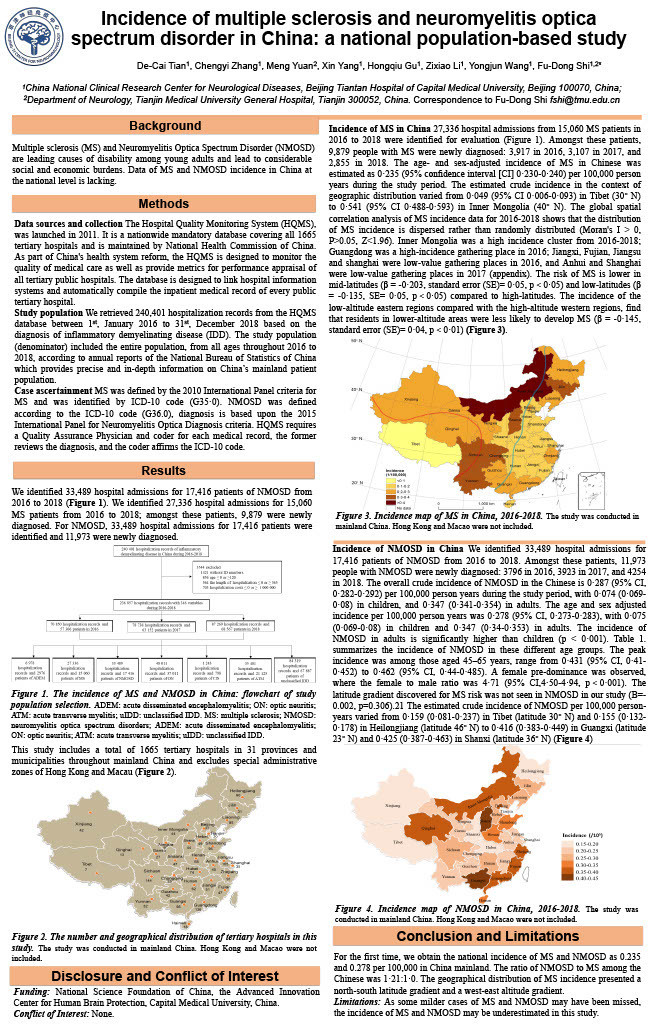Incidence of multiple sclerosis and neuromyelitis optica spectrum disorder in China: a national population-based study
Abstract
Background:
Multiple sclerosis (MS) and Neuromyelitis Optica Spectrum Disorder (NMOSD) are leading causes of disability among young adults and lead to considerable social and economic burdens. Data of MS and NMOSD incidence in China at the national level is lacking.
Methods:
We conducted the first nationwide survey of MS and NMOSD, based on the database of the National Hospital Quality Monitoring System (HQMS) of China, which covers all 1665 tertiary hospitals. The “Medical Record Homepage” of all patients were consistently collected via a standard protocol across each tertiary hospital. MS was defined by the 2010 International Panel criteria for MS and was identified by ICD-10 code (G35·0). NMOSD was diagnosed according to the 2015 International Panel for Neuromyelitis Optica Diagnosis criteria and identified by ICD-10 code (G36·0).
Findings:
We identified 27,336 hospital admissions for 15,060 MS patients from 2016 to 2018; amongst these patients, 9,879 were newly diagnosed. For NMOSD, 33,489 hospital admissions for 17,416 patients were identified and 11,973 were newly diagnosed. The age- and sex-adjusted MS incidence per 100,000 person-years was 0·235 (95% confidence interval [CI] 0·230-0·240), with 0·055 (0·050-0·060) in children and 0·288 (0·282-0·294) in adults, respectively. The age and sex adjusted NMOSD incidence was 0·278/100,000 (95% CI, 0·273-0·283), with 0·075 (0·069-0·08) in child and 0·347 (0·34- 0·353) in adult. The female to male ratio is 2·02 in MS and 4·71 in NMOSD. The peak disease onset MS and NMOSD is age of 40-49 and 45-65 years. Residents in high-latitude and high-altitude areas are more likely to develop MS (F=8·99; p<0·001). Geographical distribution of NMOSD is not related to the latitude gradient. 104 MS and 106 NMOSD adults, 2 MS and 4 NMOSD children died from 2016 to 2018.
Interpretation:
For the first time, we obtain the national incidence of MS and NMOSD as 0.235 and 0.278 per 100,000 in China mainland. The ratio of NMOSD to MS among the Chinese was 1·21:1·0. The geographical distribution of MS incidence presented a north-south latitude gradient and a west-east altitude gradient.
Funding:
National Science Foundation of China (81801199, 91642205, and 81830038); Advanced Innovation Center for Human Brain Protection, Capital Medical University, Beijing.

